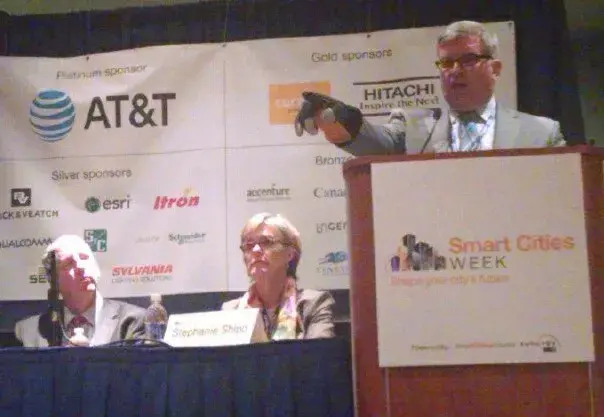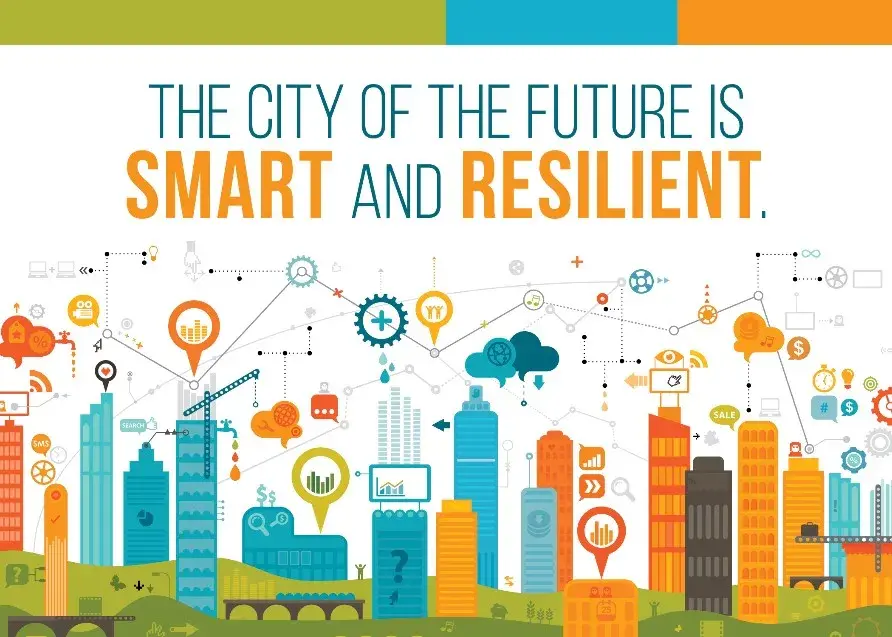The Smart Cities initiative seeks to bring cities, federal agencies, universities and the private sector together to advance our municipalities by investing in solutions to issues concerning energy and climate, transportation, public safety and transforming city services. 
On September 28, the Department of Homeland Security (DHS) Science and Technology Directorate (S&T) First Responders Group (FRG) Director Dan Cotter discussed the need for geospatial data for future cities and emergency response in a panel at the Smart Cities Week convention in Washington, D.C.
Cotter took part in the panel titled, “Using Geospatial Data to Achieve Sustainable Development and Resilience of Communities.”
The panel discussed how geospatial data could help cities set project goals, as well as measure and achieve Smart Cities’ goals that serve as indicators for future sustainable urban development. According to Cotter, maps and 3-D models are a vital part of geospatial data, and they influence how cities use the data to adapt to social conditions for both redevelopments planning and improving public safety. Monitoring city services, traffic patterns, and other geometrics will not only be vital for Smart City planning, but for public safety as well.
Cities that have already made headway in this area were on hand to share their experiences. “Pittsburgh is on the vanguard of the way technology intersects with the government services. We're looking at new tools from data analytics that can better distribute our public safety resources and coordinate first responders to sensors that can help us better deliver core city services, such as snow plowing and trash delivery,” said Pittsburgh Mayor Bill Peduto.
FRG is focused on the everyday items that could make a first responder’s job safer and more efficient. “Public safety is actually a subset of Smart Cities, and what we’re going about is essentially interoperability. How do you make things work together?” asked Cotter.
Personal protective equipment of the future could be at the baseline level throughout Smart Cities’ operating future. What do first responders want when they arrive on the scene? Wearable technology could potentially link a first responder to the environment he or she is operating in by incorporating geospatial data. Cotter suggested that, in the future, a computer system in a building could not only recognize, but interact and share 3-D information with a firefighter who is about to enter a burning building.
The Improved Structure Firefighting Glove is an example of the type of product FRG regularly develops for first responders. The glove has three layers of protection, including reflective covers over the fingernails to protect the hands from injuries. It repels water better and dries faster than the standard gloves. It is this type of product that may someday have a role in the world of geospatial data. While this glove is an improvement, Cotter would like to see it taken a step further by considering smart fabrics with embedded microcomputers that could even include sensors in this very same type of glove.
“It could be Bluetooth connection or figuring out a way to tap the glove to control a device in a manner that allows a firefighter to be hands-free. Making a motion or extending a hand out and detect a potential hazard that is behind a door. It is this type of futuristic wearable technology that could communicate through the fabric to onsite personal area network,” said Cotter.
Connectivity is yet another aspect of furthering the development and use of geospatial data. The Internet of Things (IoT) uses sensors, devices and analytics that could potentially give cities a wide range of information for providing essential services, cutting costs and generating living labs.
 In addition, IoT is rapidly influencing metropolitan responses to disasters. S&T has recently allocated $10 million towards the development of IoT sensor-based tools that help emergency planners with crucial decision-making scenarios, such as when a town should evacuate due to flooding.
In addition, IoT is rapidly influencing metropolitan responses to disasters. S&T has recently allocated $10 million towards the development of IoT sensor-based tools that help emergency planners with crucial decision-making scenarios, such as when a town should evacuate due to flooding.
“The number one cause of deaths from flooding is that people choose to drive or walk through flooded areas. Eighty to ninety people a year die from taking these types of risks. Last year it was 176, which is a new record. People regularly risk their lives trying to evacuate from flood zones or picking up their kids from school,” explained Cotter.
“One of the activities FRG is working on is the development of low-cost sensors that can be deployed prior to flooding, and control how and when alerts and warnings are sent out to the public. This could help first responders and emergency managers figure out where people are, and make decisions quickly enough to stop people from driving into or walking through flooded areas and losing their lives,” said Cotter.
The White House Office of Science and Technology Policy also posted the Smart Cities Fact Sheet, which further describes how various government agencies and their partners are investing in initiatives that are geared towards public safety, transportation, and technology.
Have questions for FRG about what the Smart Cities initiatives mean for first responders? Email us at first.responder@hq.dhs.gov.
